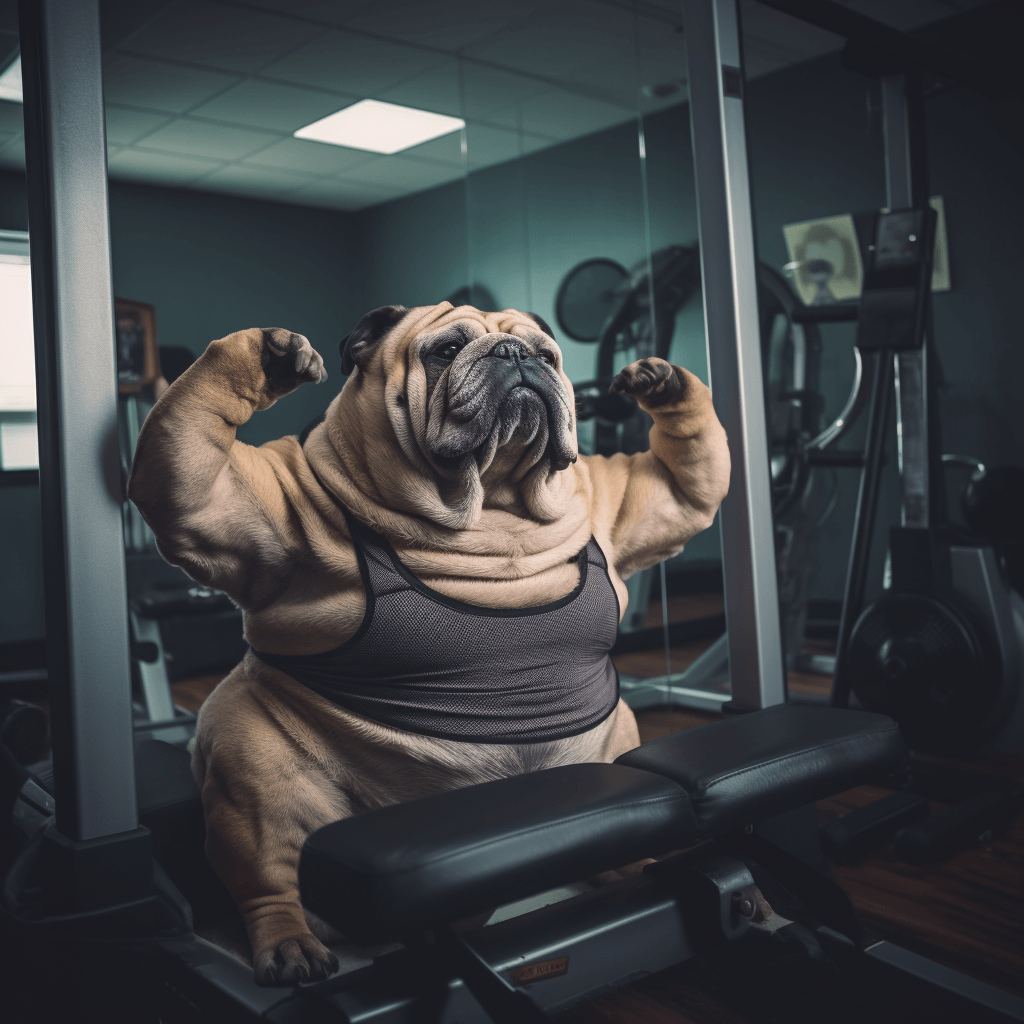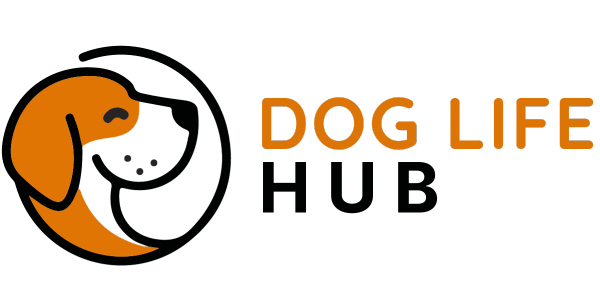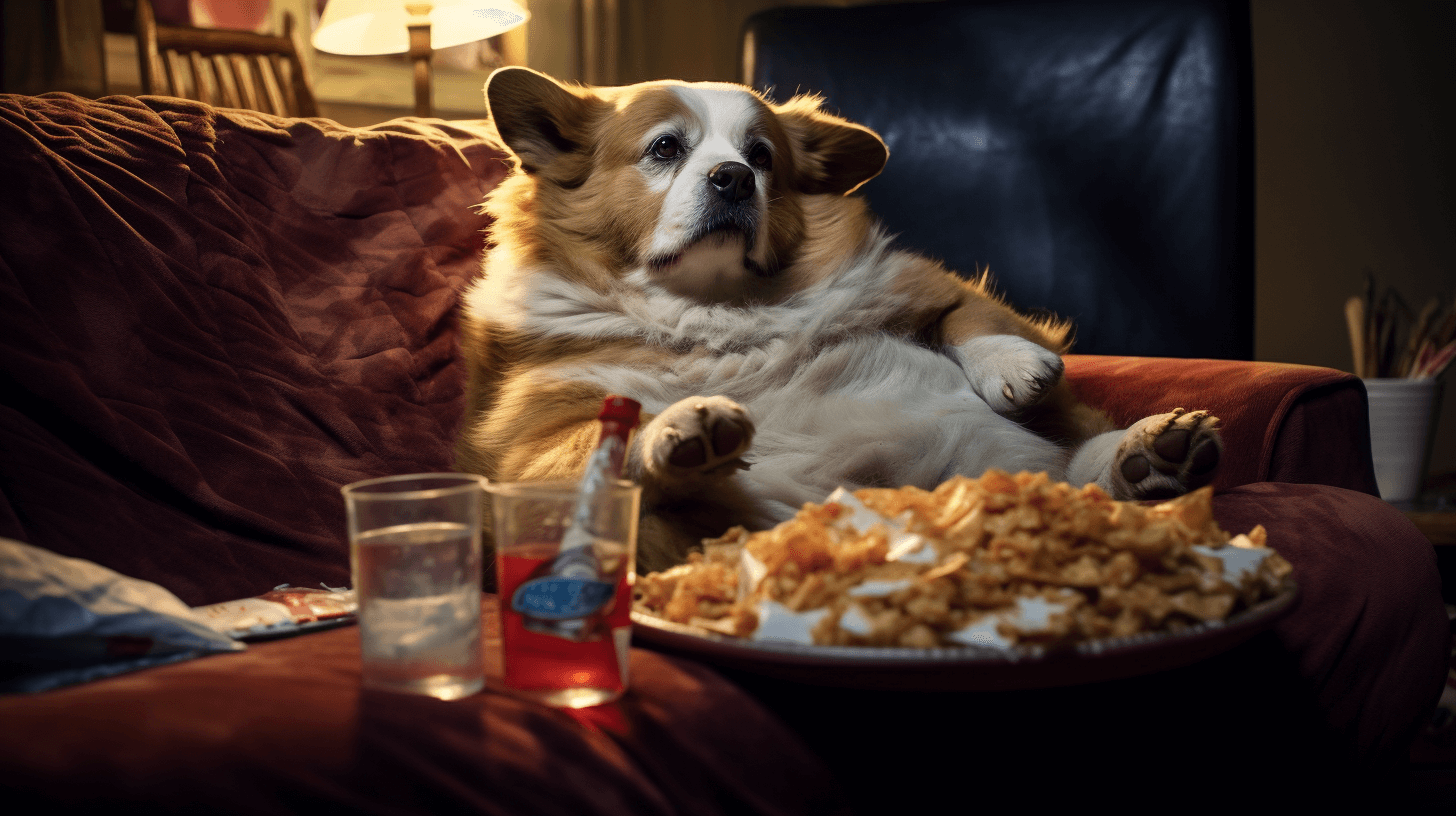How to Help Your Dog Lose Weight
Obesity and Weight Loss in Dogs
The question of how to help your dog lose weight is becoming very common these days. The issue of overweight dogs globally is becoming increasingly concerning. This trend is largely due to a combination of factors such as overfeeding, lack of proper exercise, and sometimes, owner’s misunderstanding of their pet’s nutritional needs.
As with humans, obesity in dogs can lead to a range of health problems, including joint issues, diabetes, and heart disease. It’s important for dog owners to ensure their pets get regular exercise and a balanced diet to maintain a healthy weight. Regular check-ups with a vet can also help in managing and preventing obesity in dogs.
Helping a dog lose weight is not hard in theory, but requires commitment from the owner. It can be broken down into a few simple sentences. Choose a diet-focused dog food, maintain proper portion control, ensure sufficient but gentle exercise, and refrain from extra human food and treats. Weight loss in dogs varies; some may lose it slowly, others more quickly. The key is to stick to the program you and your dog are following.
How to Tell if Your Dog is Overweight
Identifying whether your dog is overweight involves a combination of visual assessments and physical checks. Here are some key steps you can follow:
- Look at the Shape from Above: View your dog from above. A healthy dog will have a noticeable waist behind the ribs. If the waist is absent or barely visible, this could be a sign that your dog is overweight.
- Side View Check: Look at your dog from the side. The abdomen should be tucked up, and not level with or hanging below the ribcage. A sagging stomach or a straight line from the ribcage to the hips indicates excess weight.
- Feel the Ribs: You should be able to feel your dog’s ribs without pressing hard. If you can’t feel the ribs, or if you have to press hard to feel them, your dog might be overweight. There should be a slight fat covering over the ribs, but each rib should still be distinct.
- Check Other Bony Areas: Feel other bony prominences, such as the spine and hips. Like the ribs, you should be able to feel these bones with a slight fat covering.
- Observe Mobility and Stamina: Overweight dogs may display less energy, have difficulty in walking or running, and may become winded quickly.
- Behavioural Signs: Look for signs like difficulty in grooming themselves, reluctance to play or go for walks, or showing signs of tiredness more quickly than usual.
- Consult a Vet: If you’re unsure, the best course of action is to consult your veterinarian. They can provide a professional assessment and advise you on the ideal weight for your dog’s breed, age, and size.
- Weigh your Dog: To accurately weigh your dog, especially if it’s a small breed, you can use your bathroom scales. First, hold your dog and step onto the scale to record the combined weight of both you and your dog. Then, put your dog down and weigh yourself alone. The difference between these two weights will give you your dog’s weight. This method is a simple way to monitor your dog’s weight at home.
Average Weight Ranges for Common Breeds
Here’s a table of some of the most popular dog breeds and their recommended weight ranges. Please note that these weights can vary based on the dog’s gender, build, and individual differences. Always consult with a veterinarian for the most accurate and personalized advice for your dog.
| Breed | Recommended Weight Range |
|---|---|
| Labrador Retriever | Males: 65-80 lbs, Females: 55-70 lbs |
| German Shepherd | Males: 65-90 lbs, Females: 50-70 lbs |
| Golden Retriever | Males: 65-75 lbs, Females: 55-65 lbs |
| French Bulldog | Under 28 lbs |
| Bulldog | Males: 50-55 lbs, Females: 40-45 lbs |
| Beagle | 20-30 lbs |
| Poodle (Standard) | Males: 60-70 lbs, Females: 40-50 lbs |
| Rottweiler | Males: 95-135 lbs, Females: 80-100 lbs |
| Yorkshire Terrier | Up to 7 lbs |
| Boxer | Males: 65-80 lbs, Females: 50-65 lbs |
| Dachshund (Standard) | 16-32 lbs |
| Pembroke Welsh Corgi | 25-30 lbs |
| Siberian Husky | Males: 45-60 lbs, Females: 35-50 lbs |
| Australian Shepherd | Males: 50-65 lbs, Females: 40-55 lbs |
| Cavalier King Charles Spaniel | 13-18 lbs |
| Shih Tzu | 9-16 lbs |
| Boston Terrier | 12-25 lbs |
| Pomeranian | 3-7 lbs |
| Chihuahua | 2-6 lbs |
| Pug | 14-18 lbs |
Remember, every dog breed has its own ideal weight range, and what is healthy for one breed may not be for another. Regular check-ups with a vet are important to maintain your dog’s health.
The Owner’s Role in Helping a Dog Lose Weight
I’ve helped many dogs lose weight, and one thing became apparent to me early on: the biggest challenge often lies with the dog owners themselves. That’s why I approach this issue without being dogmatic (no pun intended) in the methods and advice I provide.
While I hold certain views on the ongoing debates about raw diets, homemade meals, and commercial dog foods, I’ve learned to set these opinions aside. My guiding principle in canine weight loss is straightforward: ‘Weight loss is king.’
Some owners may not have the time or motivation to prepare homemade meals for their dogs. Others might struggle to find quality ingredients for a raw diet, some owners may be hesitant about using commercial dog foods. Others may only want to feed their dog commercial food.
Each of these perspectives has its merit, but they pale in comparison to the importance of reducing your dog’s weight and the health risks associated with obesity.
So, whether your dog is on a commercial diet formulated for weight loss, a hypoallergenic diet, or enjoying home-cooked meals of salmon and vegetables, the primary focus should always be on weight loss. Nutritional concerns can be addressed later, once the primary issue of excess weight has been tackled.
With this philosophy in mind, let’s move forward and learn how to modify your dog’s diet to encourage weight loss – assuming, without judgement, that the average person reading this will wish to feed their dog a regular, commercial dog food.
Understanding the Role of Calorie Counting in Dog Weight Loss
Calories are key in dog weight loss, just as they are in human weight management. Understanding the importance of calories can help you effectively manage your dog’s weight. Here are some key points:
- Creating a Caloric Deficit: For a dog to lose weight, it must consume fewer calories than it burns. This caloric deficit forces the body to use stored fat for energy, leading to weight loss. Managing calorie intake is key to creating this deficit in a controlled and healthy manner.
- Ensuring Gradual Weight Loss: Rapid weight loss can be harmful to dogs. By carefully managing caloric intake, weight loss can be achieved gradually, which is safer and healthier. The goal is typically to aim for a slow and steady reduction in weight, usually around 1-2% of the dog’s total body weight per week.
- Preventing Muscle Loss: A well-managed calorie reduction, particularly one that ensures adequate protein intake, helps ensure that the weight loss is primarily from fat, not muscle. Maintaining muscle mass is important for the dog’s overall health, strength, and metabolism. Quality commercial diet foods for dogs will ensure your dog receives the correct nutrition while helping him or her lose weight.
- Adjusting Diet for Weight Loss: Reducing calories doesn’t just mean feeding less of the same food. It often involves changing to a diet that is lower in fat and calories but still high in essential nutrients and fiber. This helps the dog feel full and satisfied while still losing weight.
- Tailoring to Individual Needs: Caloric needs for weight loss vary from dog to dog based on factors like current weight, target weight, activity level, and overall health. A one-size-fits-all approach doesn’t work; calorie intake must be tailored to each individual dog’s needs.
- Monitoring and Adjusting: The weight loss process isn’t static. As the dog loses weight, its caloric needs may change. Regular monitoring and adjustments to the diet are necessary to ensure continued progress and prevent weight plateaus or nutritional deficiencies.
- Health and Well-being: Proper calorie management during weight loss is not just about aesthetics or numbers on a scale. It’s about improving the dog’s health, reducing the risk of obesity-related diseases, and enhancing overall quality of life.

Calories are central to the weight loss process in dogs. Managing calorie intake helps ensure that weight loss is gradual, healthy, and tailored to the dog’s individual needs, ultimately leading to better health and well-being.
Average Daily Calorie Requirements For Healthy Dogs
The average daily calorie requirements for dogs can vary widely based on several factors, including the dog’s size, age, breed, activity level, and overall health. Here are some general guidelines based on size, which should be adjusted to suit the individual needs of each dog:
- Small Breeds (up to 20 lbs): Typically require between 200 to 400 calories per day. For example, a 10-pound dog might need about 200 to 275 calories.
- Medium Breeds (20-50 lbs): These dogs usually need about 400 to 800 calories per day. For instance, a 30-pound dog might require around 450 to 600 calories.
- Large Breeds (50-90 lbs): They often require 800 to 1,350 calories daily. A 70-pound dog, for example, might need between 900 and 1,350 calories.
It’s important to note that these are very rough estimates. For instance, an active dog will require more calories than a sedentary one. Puppies and pregnant or nursing females often require more calories, while older, less active dogs may need fewer. Giant breeds may require considerably more calories.
Counting calories is key to helping your dog lose weight. For example, if your medium-sized dog weighs 56lbs but should weigh 46lbs, it’s eating too much. Suppose it needs 700 calories daily to be at a healthy weight, but you’re giving it 1,000 calories. This extra 300 calories is why it’s overweight. By reducing its intake to 700 calories, your dog will gradually reach a healthy weight. Essentially, a dog’s weight reflects its calorie consumption.
Alternatively, you could keep feeding 1,000 calories but increase its exercise to burn the extra 300 calories. Either way, balancing calories with activity is how you achieve a healthy weight for your dog.
Remember – these figures are theoretical examples – please consult a vet or dog nutritionist to help you work out the calorie deficit you should implement in your dog’s diet to aid in weight loss.
Actionable Steps You Can Take to Help Your Dog Lose Weight
Helping your dog lose weight can seem overwhelming at first, but breaking it down into manageable steps can make the process more approachable. Here’s a brief encapsulation of the steps you should take:
- Veterinary Consultation: Start with a visit to the vet. They can assess your dog’s health, confirm if weight loss is necessary, and help set a realistic target weight. They can also check for any underlying health issues that might affect the weight loss process.
- Determine Caloric Needs: Your vet can help calculate the number of calories your dog needs each day to lose weight safely. This will involve adjusting their current food intake or possibly switching to a weight management dog food.
- Choose the Right Diet: Select a diet that is appropriate for weight loss – typically, a diet that’s high in protein and fiber but lower in calories. Your vet can recommend specific brands or types of food that would be best.
- Control Portions and Measure Food: Use a measuring cup or a kitchen scale to accurately measure your dog’s food portions to ensure you’re not overfeeding.
- Limit Treats: Treats should only constitute a small percentage of your dog’s daily caloric intake. Opt for healthy, low-calorie treats and include them in the daily calorie count.
- Increase Exercise: Incorporate more physical activity into your dog’s routine. This could be longer or more frequent walks, playtime, or specific exercises recommended by your vet.
- Monitor Progress: Regularly weigh your dog and keep track of their body condition. Adjust their diet and exercise as needed based on their progress.
- Be Consistent: Consistency is key in diet and exercise routines. Stick to the plan, and avoid giving in to those pleading eyes for extra treats or food.
- Regular Vet Check-ups: Regular check-ups are important to monitor your dog’s health and adjust the weight loss plan as needed.
Remember, weight loss should be a gradual process. Rapid weight loss can be harmful to your dog’s health. The goal is to achieve a healthier weight that can be maintained long-term for overall health and well-being.
Thanks for reading, and please leave a comment below if you have any tips, advice or questions. We’d love to hear from you!







